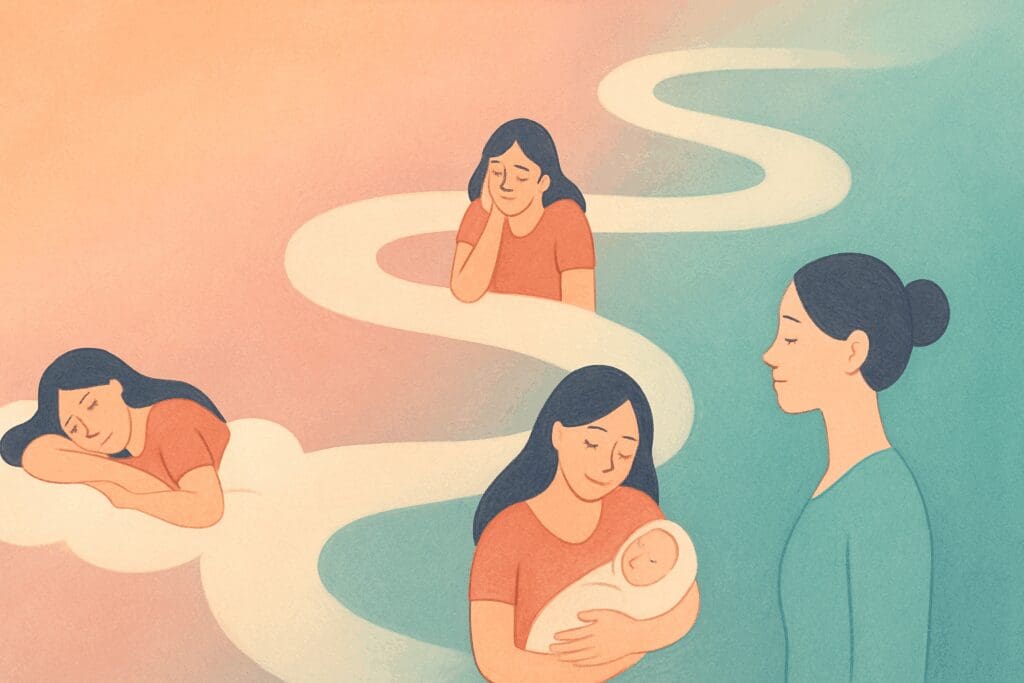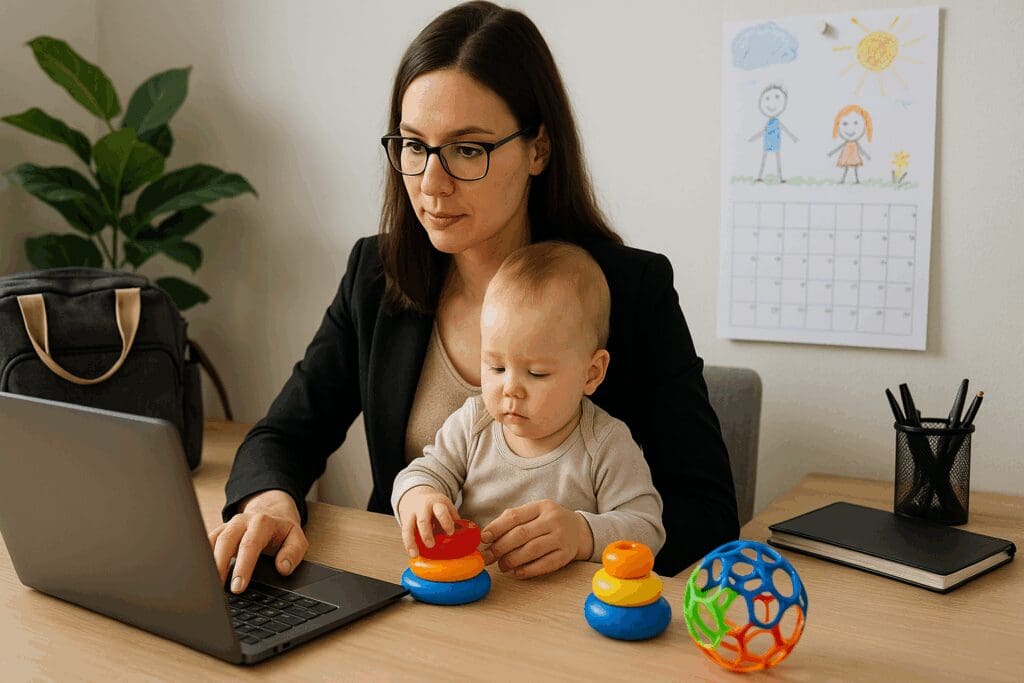The journey of motherhood continues to evolve long after childbirth, and by 8 months postpartum, many women find themselves navigating a unique and complex phase of physical recovery, emotional fluctuation, and identity rediscovery. This period often marks a deeper shift in daily routines, relationships, and self-perception, especially as the demands of parenting intensify while the visible support from others may begin to wane. Recognizing the importance of holistic well-being during this time is essential, not only for the health of the mother but also for the stability and growth of the family unit. At 8 months postpartum, challenges that once felt temporary may seem more enduring, prompting new questions about health, energy, emotions, and identity that deserve careful, compassionate attention.
You may also like: Essential Health Benefits of Drinking Milk While Pregnant Every Mother Should Know

Understanding the Postpartum Timeline: What Happens After Birth
To truly appreciate the intricacies of the 8-month postpartum mark, it helps to first define postpartum in its full scope. Medically speaking, the postpartum period—also known as the puerperium—begins immediately after childbirth and is often considered to last around six weeks. However, many experts and mothers agree that the true postpartum recovery timeline extends far beyond this initial window. So, how long are you considered postpartum? From a physiological, emotional, and psychological standpoint, the answer can vary greatly. Some studies suggest that women may be considered postpartum for as long as a year, while others advocate for a more extended definition that recognizes changes occurring over two years.
Understanding this broader context can offer reassurance and validation. Postpartum healing is not linear. Whether you’re 2 months postpartum and still adjusting to sleep deprivation, or 6 months after birth and noticing emotional shifts, each phase presents distinct experiences. By 3 months postpartum, many mothers begin to physically stabilize, but hormonal recalibrations often continue. By 4 months postpartum, lingering fatigue or musculoskeletal discomfort may persist. By the time you reach 5 months postpartum and beyond, emotional clarity can begin to return, but it may be interspersed with moments of confusion and vulnerability.
Emotional Realities at 8 Months Postpartum: Shifting Identity and Mood Changes
The emotional landscape at 8 months postpartum can be particularly nuanced. It is not uncommon for women to experience a resurgence of anxiety, mood swings, or emotional detachment during this time. These shifts are often tied to hormonal changes that continue to evolve long after childbirth. The postpartum hormones timeline is far from uniform, and for many women, it can take up to a year or more for the endocrine system to return to pre-pregnancy balance. Oxytocin, prolactin, and estrogen levels can fluctuate unpredictably, often leaving women confused about the source of their emotional shifts.
At this stage, mothers might also be dealing with heightened separation anxiety—both from their infants and their former selves. Questions like “Who am I now?” and “Will I ever feel like my old self again?” are common. The transition into motherhood, often described as matrescence, can be overwhelming, especially when societal narratives downplay the long-term impact of childbirth. The emotional strain may intensify for those who did not experience adequate support in the earlier phases such as at 2 months postpartum or 3 months postpartum, when bonding and breastfeeding challenges often dominate.
Recognizing and addressing postpartum depression (PPD) or anxiety remains crucial, even this late into the first year. Symptoms can surface or re-emerge at any point. Unlike the baby blues, which usually resolve within the first few weeks, PPD may persist or even begin anew at 8 or 9 months postpartum. Regular mental health check-ins, journaling, and support groups can provide vital insights and encouragement. It’s important to remember that emotional healing is as integral to recovery as physical repair.

Navigating Physical Healing: Recovery Is Still in Progress
While many expect physical healing to conclude within weeks of delivery, the reality is that full recovery often extends well into the first year. At 8 months postpartum, some mothers continue to experience lingering effects such as pelvic floor dysfunction, diastasis recti, or lower back pain. The postpartum recovery timeline varies significantly depending on delivery type, physical condition before pregnancy, and access to postpartum care. Unfortunately, the assumption that a mother should feel “back to normal” by this point can lead to underreporting and neglect of chronic symptoms.
Particularly for women who are 6 months postpartum or beyond, there may be an increase in physical activity as babies become more mobile. This new dynamic can place unexpected stress on healing tissues, especially the abdominal and pelvic muscles. The misconception that postpartum healing ends after six weeks undermines the reality of ongoing tissue regeneration and hormonal changes that continue to influence physical stamina.
Restorative exercises such as pelvic floor therapy, yoga, or core rehabilitation can be especially beneficial at this stage. These practices address not just muscle tone but also overall body alignment, breath control, and nervous system regulation. Proper nutrition and hydration are just as critical, as they support cellular repair and energy production—needs that remain heightened long after 6 or 7 months postpartum.

The Role of Sleep and Fatigue in Postpartum Well-being
Sleep deprivation is a hallmark of early motherhood, but by 8 months postpartum, many mothers report a distinct form of fatigue that differs from the sleepless nights of the newborn phase. This chronic tiredness often stems from cumulative sleep loss, hormonal fluctuations, and the emotional labor of caregiving. While some babies begin to sleep through the night around this time, sleep regression or teething issues can disrupt any established routines.
Understanding the postpartum timeline in the context of sleep and fatigue helps to normalize these experiences. It is not unusual for energy levels to fluctuate even at 6, 7, or 9 months postpartum. Mothers often describe a “second wave” of exhaustion that catches them off guard, particularly if external pressures—like returning to work or managing household duties—have intensified. The body’s circadian rhythms and cortisol levels may still be adapting, leading to irregular sleep patterns and difficulty waking refreshed.
Strategies to mitigate fatigue include practicing good sleep hygiene, delegating tasks when possible, and introducing short periods of restorative rest during the day. Even 20-minute naps can improve mood and cognitive function. Supportive partners and caregivers play a crucial role in creating opportunities for rest and recovery. Prioritizing sleep is not a luxury; it is a foundational aspect of postpartum healing.

Nutrition and Energy: Fueling the Demands of Motherhood
Nutritional needs remain elevated during the postpartum period, especially for breastfeeding mothers. At 8 months postpartum, many women are still nursing or are in the process of weaning, both of which require careful attention to dietary balance. Even for those who have stopped breastfeeding, the body continues to replenish nutrient stores depleted during pregnancy and birth.
Key nutrients such as iron, calcium, magnesium, and B vitamins support energy metabolism, hormonal regulation, and neurological health. The importance of the vitamin B complex, in particular, cannot be overstated. B vitamins facilitate red blood cell production, adrenal function, and mental clarity—all critical functions for postpartum recovery. Anemia or B12 deficiency, which may go unnoticed in the early weeks, can contribute to the “brain fog” and fatigue commonly reported at 6 or 8 months postpartum.
Incorporating nutrient-dense foods such as leafy greens, legumes, nuts, whole grains, and lean proteins can enhance vitality and support long-term healing. Hydration also plays a key role. Many mothers unknowingly operate in a state of mild dehydration, which can worsen fatigue, impair digestion, and reduce breast milk quality. Making hydration and balanced nutrition a daily priority offers profound benefits for both body and mind.
Reevaluating Relationships and Social Dynamics
As the postpartum months progress, relationships often undergo significant transformation. By 8 months postpartum, the initial flurry of attention and support may have diminished, leaving some mothers feeling isolated or overlooked. This shift can be particularly disorienting when coupled with the increasing demands of childcare. Conversations that once revolved around feeding and sleep schedules may now center on developmental milestones and discipline strategies, introducing new areas of disagreement or stress.
The spousal or partner relationship may also face renewed pressure at this stage. As both individuals juggle new responsibilities, communication breakdowns and misaligned expectations can surface. Many couples find that the emotional labor of parenting falls disproportionately on one partner, leading to resentment or burnout. These dynamics are not exclusive to 8 months postpartum; similar challenges are often reported at 5 months postpartum and 6 months postpartum as well, but they tend to become more pronounced as families settle into long-term patterns.
Reconnecting through shared experiences, honest dialogue, and mutual support can help rebuild intimacy and trust. Scheduling regular check-ins, dividing responsibilities clearly, and expressing appreciation for each other’s contributions are practical strategies that foster relational resilience. Seeking counseling or parenting classes can also provide external frameworks for navigating this complex terrain.

Returning to Work and Reclaiming Professional Identity
For many mothers, 8 months postpartum coincides with a return to the workforce or the pursuit of professional goals. Reentering this realm can be both empowering and overwhelming. Balancing career ambitions with caregiving responsibilities often demands a high level of planning, adaptability, and emotional regulation. Feelings of guilt, anxiety, or inadequacy are not uncommon, particularly when workplace cultures are unsupportive or inflexible.
The postpartum duration varies for every woman, but the societal expectation to resume full productivity by 6 months after birth or earlier can feel both unrealistic and unfair. Employers who understand the physiological and emotional realities of the postpartum timeline can make a significant difference in a mother’s ability to thrive. Policies such as phased return schedules, flexible hours, and on-site childcare promote a healthier work-life integration.
Mothers reentering professional spaces often grapple with questions about identity and competence. The transition requires not only logistical coordination but also emotional recalibration. Strategies for success include setting clear boundaries, seeking mentorship from other working mothers, and allowing room for imperfection. With the right support systems, the return to work can be a powerful phase of growth and empowerment.
Spiritual and Existential Reflections in the Postpartum Journey
Beyond the tangible aspects of healing and adjustment, the postpartum period also invites profound spiritual and existential reflection. At 8 months postpartum, many mothers find themselves contemplating the deeper meaning of motherhood, legacy, and personal transformation. These reflections often surface unexpectedly, triggered by milestones such as a baby’s first words, a return to menstruation (commonly known as the pp period), or a symbolic event like the first day at daycare.
Such moments can be both grounding and destabilizing. They may prompt a reevaluation of values, priorities, and life goals. Spiritual practices like mindfulness, prayer, or creative expression can provide solace and clarity. Engaging in rituals that honor this transformative journey can also foster a sense of continuity and purpose. Whether through journaling, meditative walks, or community gatherings, creating space for reflection enriches the postpartum experience.
Frequently Asked Questions: Navigating the Postpartum Journey
How does the emotional experience at 8 months postpartum differ from earlier stages like 2 or 3 months postpartum?
By the time a mother reaches 8 months postpartum, her emotional state often reflects deeper integration of the motherhood identity, which contrasts sharply with the immediate hormonal rollercoaster experienced at 2 months postpartum or 3 months postpartum. Earlier stages are frequently dominated by acute hormonal shifts, sleep deprivation, and the intensity of newborn care, while 8 months brings a more reflective, nuanced set of emotions. Many mothers begin reassessing personal identity, career aspirations, and relationship dynamics. There’s also often a sense of loneliness or invisibility as external support dwindles. This emotional complexity can be both empowering and challenging, requiring a new level of introspection and self-compassion.
What are some underrecognized physical symptoms that can still appear at 8 months postpartum?
One often-overlooked symptom at 8 months postpartum is joint laxity, which may persist due to lingering effects of relaxin—a hormone that softens ligaments during pregnancy. This can lead to unexpected discomfort during daily activities, especially when lifting a growing baby. Additionally, persistent abdominal separation, or diastasis recti, may continue to impact core strength and posture. Some women report unexpected bouts of dizziness or low blood pressure, especially when standing abruptly, which may be tied to hormonal fluctuations or nutrient imbalances. These lingering effects highlight the extended postpartum recovery timeline and the importance of ongoing physical care well beyond the typical 6 months after birth benchmark.
How can couples strengthen their relationship at 8 months postpartum amid evolving family dynamics?
At 8 months postpartum, couples often face a pivotal transition as routines stabilize and new parenting responsibilities settle into long-term patterns. Unlike the more reactive early stages such as 2 or 4 months postpartum, this period allows for intentional relationship reflection. To strengthen their bond, couples can benefit from reintroducing weekly check-ins focused solely on emotional needs rather than logistical planning. Creating mini-rituals of connection—such as sharing a morning coffee or an evening walk without the baby—can restore intimacy. Open discussions about each partner’s evolving identity can foster mutual empathy and reduce the risk of emotional drift.
Why does fatigue feel different at 8 months postpartum compared to 6 months postpartum or earlier?
Fatigue at 8 months postpartum often manifests as mental burnout rather than physical sleepiness. By this point, the body may have adjusted to fragmented sleep, but the cognitive load of managing a baby’s developmental milestones, housework, and possibly returning to work contributes to emotional exhaustion. Unlike the raw sleep deprivation typical at 3 or 6 months postpartum, this stage brings decision fatigue and emotional depletion. It’s compounded by an internalized expectation to “bounce back” or perform at pre-baby levels of efficiency. Support systems that focus on emotional nourishment—like therapy or peer support groups—can be essential in managing this form of exhaustion.
What role do micronutrient deficiencies play in long-term postpartum recovery?
Micronutrient deficiencies, such as low levels of magnesium, zinc, and B vitamins, can significantly impair the postpartum healing timeline. At 8 months postpartum, mothers might find themselves struggling with symptoms like hair thinning, brittle nails, or mood instability without realizing these could stem from ongoing nutritional deficits. B vitamins, especially B6 and B12, are vital for energy metabolism and nervous system function, and deficiencies may worsen symptoms of anxiety or “brain fog.” These imbalances may not have been problematic at 5 or 6 months postpartum but can become more noticeable as physiological reserves deplete. A functional nutritionist can help identify and address these gaps through targeted dietary adjustments or supplementation.
Understanding Hormonal Regulation at 8 Months Postpartum: What Should You Know?
Even at 8 months postpartum, hormonal regulation is still a dynamic process influenced by breastfeeding status, stress levels, and genetics. Women who are still nursing may experience delayed ovulation and a prolonged absence of their pp period, while others may find their cycle returning irregularly. This unpredictability often impacts mood, energy, and libido. In contrast to the intense surges during the first few weeks, hormone fluctuations at this stage can be more subtle but equally disruptive. Tracking hormonal symptoms using digital health apps can offer useful insights into patterns, especially when paired with medical consultations that explore endocrine health beyond the basic postpartum hormones timeline.
How does returning to work impact postpartum duration and psychological adjustment?
Returning to work at 8 months postpartum can be both liberating and emotionally taxing. The process often reawakens professional identity while simultaneously confronting feelings of guilt, inadequacy, or separation anxiety. Unlike transitions at 3 or 4 months postpartum, which are often more reactive, the 8-month mark allows for more strategic career reintegration. However, this stage may still feel fragile, especially if childcare arrangements are unstable or workplace accommodations are limited. Psychological adjustment hinges on factors like workplace culture, breastfeeding logistics, and the perceived value of one’s role both at home and in professional life. Advocacy for progressive parental leave and mental health policies can play a pivotal role in reducing stress during this transition.
How long are you considered postpartum, and does that change depending on individual health outcomes?
The question of how long you are considered postpartum is more complex than many assume. While the traditional medical answer caps it at six weeks, research increasingly supports a postpartum duration of 12 to 24 months, depending on various health outcomes. Factors such as delivery trauma, chronic illness, mental health diagnoses, and nutritional status all influence this timeline. For instance, a mother managing postpartum depression may still experience its effects well into 9 months postpartum or beyond. Understanding how long is the postpartum period requires acknowledging that biological and emotional recovery rarely conform to a fixed calendar and that individualized care is paramount.
What is the difference between postnatal vs postpartum, and why does it matter in care approaches?
The terms postnatal vs postpartum are often used interchangeably, but subtle distinctions can affect how care is framed and delivered. “Postpartum” generally refers to the mother’s recovery period, encompassing both physical and emotional dimensions, while “postnatal” can emphasize the newborn’s health and immediate environment. This distinction matters when designing health systems or public policy, as focusing solely on postnatal care may overlook the mother’s psychological well-being. For example, a postpartum definition rooted in maternal needs may advocate for extended mental health coverage, pelvic floor therapy, or career reintegration programs. Recognizing this difference ensures that maternal care isn’t marginalized in discussions that center primarily on infant outcomes.
8 Months Postpartum and Beyond: What Signs Signal a Need for Professional Support?
At 8 months postpartum, subtle signs such as persistent low mood, difficulty concentrating, or irritability may indicate the need for professional intervention. Unlike the more dramatic emotional episodes common at 2 or 3 months postpartum, these signs can be masked by functioning, making them harder to detect. Another red flag is the reappearance of physical symptoms like insomnia, digestive issues, or chronic pain, which can sometimes be psychosomatic in origin. A sudden change in energy levels or motivation without a clear external cause may also warrant exploration. Understanding when does postpartum end includes learning to recognize when the body or mind signals that additional support is needed, even many months after birth.
Final Reflections on the Postpartum Timeline: Navigating 6 to 9 Months Postpartum with Clarity
From 6 months postpartum to 9 months postpartum, many mothers encounter evolving developmental demands from their babies that add layers of complexity to their healing. This window often includes teething, increased mobility, and changing feeding patterns, all of which require new parenting strategies. Emotionally, this is a time when many women crave a sense of personal redefinition—a need that may have been suspended during the crisis management phase at 2 or 3 months postpartum. Realizing that the postpartum healing timeline extends well beyond medical discharge fosters a more compassionate, realistic outlook. By embracing the full arc of the postpartum timeline, mothers and their families can better navigate the intricate path from early recovery to long-term transformation.
Conclusion: Embracing the Full Spectrum of Healing at 8 Months Postpartum
By 8 months postpartum, mothers are navigating a rich tapestry of emotional shifts, physical changes, and evolving identities. This stage defies simplistic narratives and demands a nuanced understanding of postpartum meaning, duration, and impact. It is a time marked not only by challenges but also by resilience, growth, and rediscovery. As society continues to explore questions like “how long does postpartum period last” or “post partum how long does it last,” it becomes increasingly clear that postpartum healing is not a finite phase but a multifaceted journey.
Whether you are comparing your experience to what you felt at 2 months postpartum or you are preparing for what may come at 9 months postpartum, it is essential to honor your unique timeline. The journey from defining the postpartum hormones timeline to embracing the full postpartum recovery timeline involves not just physical repair but also emotional renewal and spiritual awakening. Embracing this complexity fosters greater empathy, self-compassion, and informed support for mothers everywhere.
In the end, understanding when does postpartum end may matter less than embracing the evolving nature of recovery. Healing does not adhere to a fixed script. Instead, it unfolds in waves, shaped by biology, environment, and the deeply personal story of each mother. By acknowledging and supporting the full scope of this journey, we empower women not just to recover, but to thrive in every season of motherhood.



